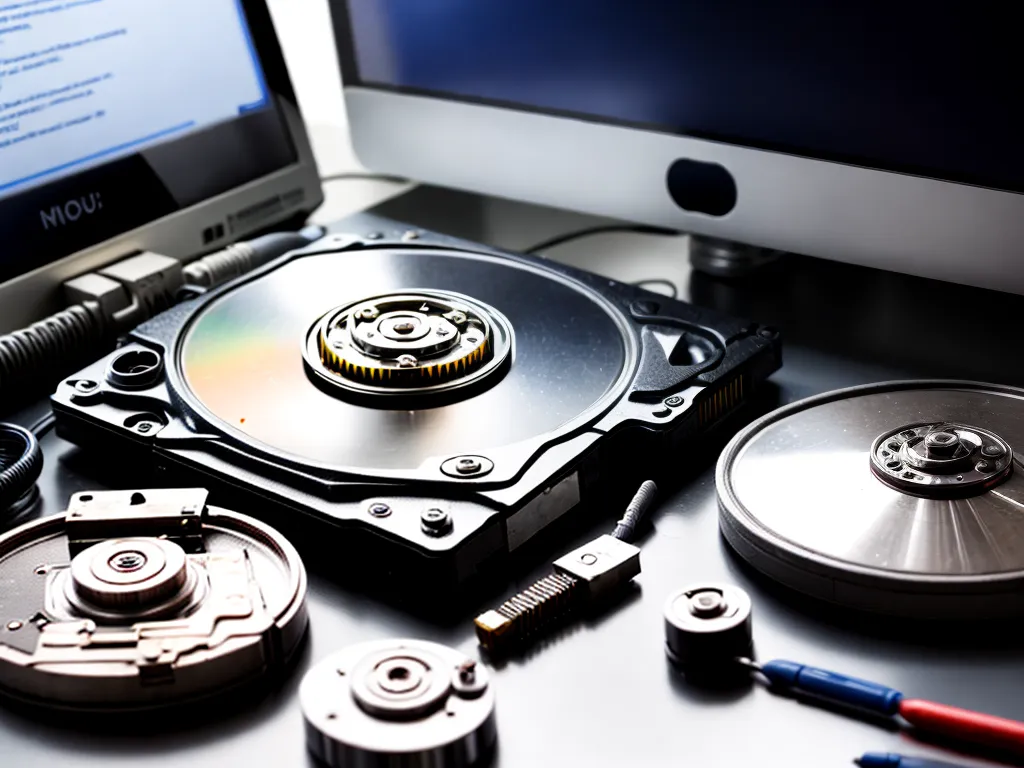
Losing important data can be devastating. As a busy professional, my data is the backbone of my business and livelihood. When disaster strikes and data is lost, it helps to be prepared. In this article, I will provide tips to prepare your data recovery plan before catastrophe hits. Being proactive can save you time, money, and irreplaceable information.
Back Up Your Data Regularly
The most vital tip is to frequently back up your data. Backups create redundancy, so you have multiple copies. Should one become corrupted or lost, you have alternatives.
How often should you back up? Experts recommend daily backups for crucial data. Weekly backups are suitable for less dynamic data. I back up client data daily and my core system weekly.
Where should you store backups? Save copies on both local and cloud storage. Local lets you restore quickly. Cloud provides an offsite copy if physical damage occurs. I keep local backups on an external SSD and cloud backups on two different services.
What should you back up? At minimum, save critical data and system files. If affordable, consider full system images for quick disaster recovery. My priority is client files and folders. I also do weekly system image backups.
Test restoring from backups to ensure the process works. When needed, the last thing you want is to find backups are corrupted or unrecoverable. I do test restores monthly for both file backups and system images.
Use RAID Storage for Redundancy
RAID (Redundant Array of Independent Disks) combines multiple drives for redundancy and performance. Should one disk fail, others still contain the data. RAID 1 mirrors drives for redundancy. RAID 5 stripes data across multiple disks with parity for reconstruction. I use a 4 disk RAID 5 for storage redundancy.
Leverage Cloud Storage
Reputable cloud services provide reliable, offsite storage. AWS S3, Google Cloud Storage, Azure, and Dropbox are top choices. Cloud storage works seamlessly in the background. Files stay in sync between local devices and the cloud. I utilize both Google Drive and Dropbox clouds to keep data available anywhere.
Have a Recovery Tool Kit Ready
Keep a recovery tool kit on hand containing:
- Bootable USB or CD to boot system if hard drive fails
- External drives for local and cloud backups
- Recovery software to retrieve deleted files
- Spare hard drives to quickly restore a system image
My recovery kit has a bootable USB, 2 external SSDs, Recuva software, and spare hard drives for system images.
Know How to Fully Wipe Drives
If selling or disposing of a computer, fully wipe drives to prevent data theft. Formatting does not truly erase data. Use disk utility software like DBAN for secure deletion. Understanding drive wiping protects your data from getting into the wrong hands.
Have a Backup Power Supply
Power loss can corrupt data and hardware. A battery backup provides temporary power to safely close programs and shut down during an outage. Surge protectors guard against power spikes damaging components. I have an uninterruptible power supply (UPS) on both my workstation and server.
Keep Essential Data Offline
While cloud backup provides offsite protection, keeping some critical data offline prevents malware or ransomware from encrypting it. Store key data on external media disconnected when not in use. Optical discs offer long term archiving. I keep tax documents, contracts, and system image backups on external hard drives and DVDs offline.
Understand Software RAID vs Hardware RAID
Software RAID uses the operating system to manage the RAID. Hardware RAID uses a dedicated controller for the RAID tasks. Software RAID is cheaper and offers flexibility. Hardware RAID provides better performance and reliability. My home office uses software RAID, while my enterprise servers leverage reliable hardware RAID.
Leverage Drive Mirroring
Drive mirroring instantly replicates data between two drives or arrays in real-time. Unlike backups that run periodically, mirroring constantly writes data to both locations. This protects against data loss in-between backups. Using mirroring, I replicate data from my faster SSD to a larger slower HDD.
Have Dedicated Scratch Space
Provide dedicated scratch space for software like video editors that require high performance temporary storage. Faster SSDs work best for scratch space. Isolating scratch prevents the OS from filling up the primary drive. My digital media workstations utilize a dedicated NVMe SSD just for scratch.
Consider Data Recovery Services
If disaster strikes and critical data remains lost, professional recovery services can retrieve it from storage media. This is an expensive last resort to recover irreplaceable data. Leading services like DriveSavers can salvage data from failed drives and corrupted storage.
Test, Update and Audit Your Strategy
Routinely test backups, update recovery tools, and audit your overall strategy. As data needs evolve, review your approach. Failure to maintain a recovery plan makes it ineffective when needed most. I dedicate time every quarter to reassess my data recovery plan.
Losing data can have devastating professional and personal consequences. However, being prepared with a robust recovery strategy minimizes risk and guards what matters most. Utilizing backups, redundancy, offline media, recovery tools, and a prudent methodology lets you act quickly when catastrophe occurs. With a diligent plan, you can confidently recover from almost any data disaster.












